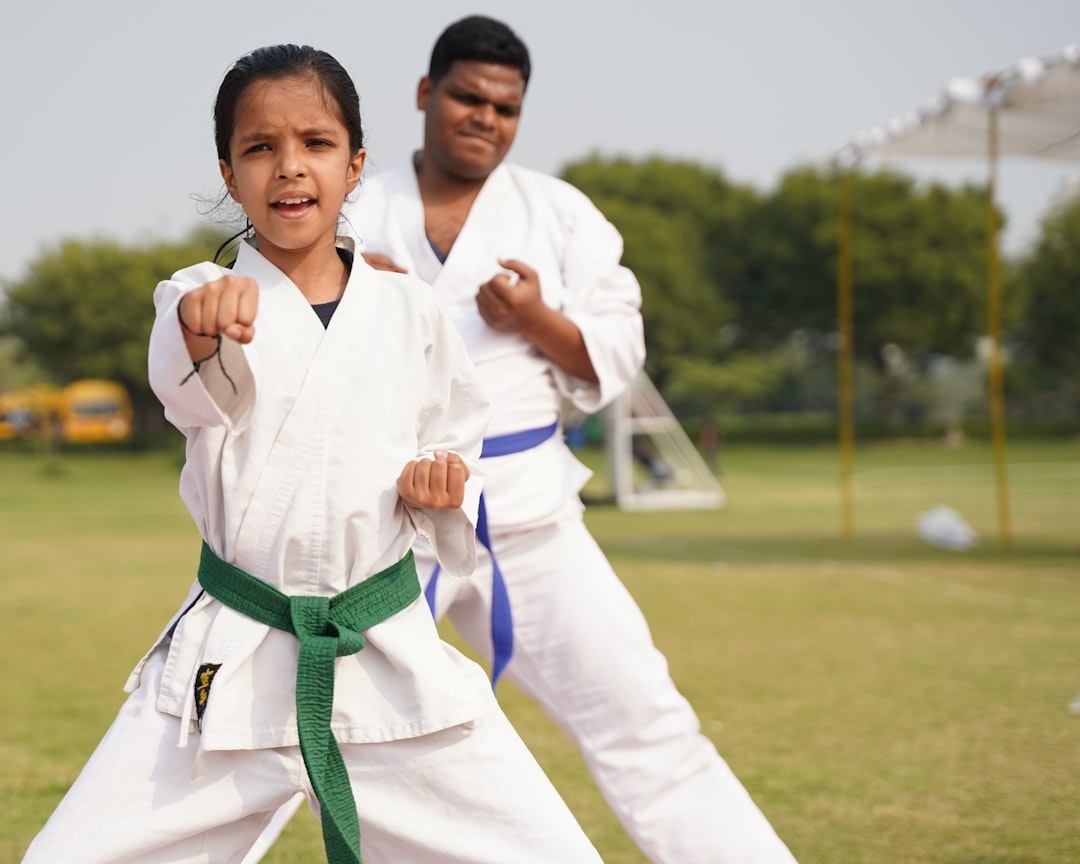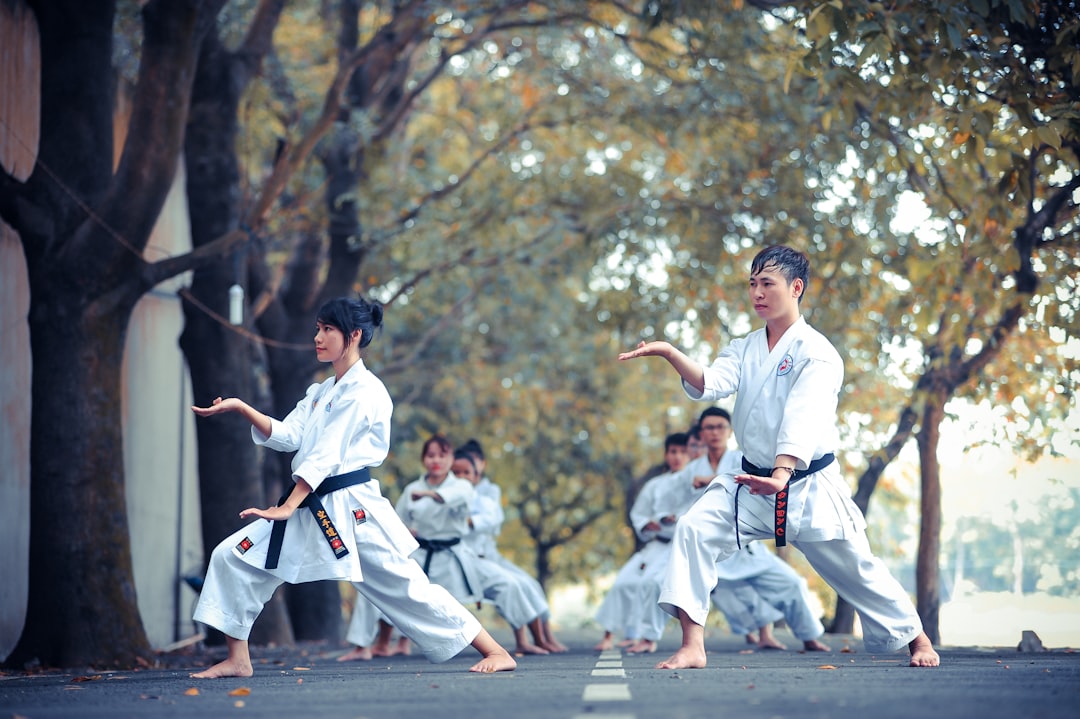The karate suit, or Gi, is more than just an article of clothing for practitioners—it's a symbol of respect and discipline within the martial arts community. Comprising a jacket, trousers, and belt, each element of the Gi carries deep significance, reflecting the philosophy and practicality of karate. The Gi's design allows for optimal movement and observation of techniques, which is essential for training. Selecting the right Gi is crucial, as it should offer comfort, flexibility, and durability for beginners, while advanced practitioners may choose specialized gis based on their discipline within karate. Proper care of your Gi involves adhering to specific washing instructions—typically cold water, gentle detergent, and air drying—to preserve its quality and longevity, which is a mark of respect in the martial arts community and demonstrates commitment to the practice of karate.
Karate enthusiasts and practitioners often inquire about the traditional attire donned during practice—commonly termed a karate suit. This article delves into the essence of the ‘karate suit called’ Gi, which is central to the discipline’s tradition and practice. We will explore its components, the importance of choosing the right Gi for various levels of karate proficiency, and essential maintenance tips to ensure your Gi stands the test of time and technique. Join us as we unfold the role and significance of this quintessential garment in the world of martial arts.
- Understanding the Karate Suit: The Gi's Role and Significance
- Components of a Traditional Karate Gi
- Selecting the Right Gi for Different Levels of Karate Practice
- Caring for Your Karate Gi: Maintenance and Upkeep Tips
Understanding the Karate Suit: The Gi's Role and Significance

When engaging in karate, practitioners don a uniform known as a gi. This traditional garment serves several purposes beyond mere attire; it is a symbol of respect and discipline within the martial arts community. The gi, which can be referred to as a karate suit or do-gi, is made of cotton or hemp and consists of a jacket, trousers, and a belt, known as an obi, which indicates the wearer’s rank. The uniform allows instructors and peers to assess each other’s techniques without distraction, fostering a focused and respectful environment. It also provides a standardized attire that connects practitioners across different schools and styles of karate, emphasizing unity and tradition. Are the components of a gi significant in their function and symbolism? Absolutely, as each element of the gi represents an aspect of karate’s philosophy and practice. The simplicity of the gi’s design ensures functionality and adherence to the martial art’s principles, making it a quintessential part of every karateka’s training.
Components of a Traditional Karate Gi

A traditional karate suit, often referred to as a “Karate Gi,” is a garment rich in history and symbolism. It consists of specific components that adhere to both traditional Japanese standards and the functional needs of martial artists. The Gi typically includes a jacket, trousers, belt, and in some cases, a vest or collar for added structure. The jacket, known as the “Uwagi,” is usually buttoned up the front and has long sleeves that extend past the wrists. It’s designed to allow for a full range of motion during practice and competition. The trousers, called “Shin-gi,” are straight-legged and hemmed at the ankle, providing comfort and ease of movement for the practitioner. The belt, or “Obi,” is not just a functional part of the Gi but also serves as a symbol of rank within the discipline of karate. It’s tied at the back in a knot known as “Hanafuda-oshi,” which again ensures both stability and traditional adherence. Each component of the Karate Gi is carefully constructed to embody the discipline and respect that karate practitioners uphold. What differentiates the Karate Gi from other martial arts uniforms are its specifications, which have been refined over centuries to meet the unique demands of karate training and competition. Are the components of a Karate Gi different from those in other martial arts? The answer is no, not fundamentally. While the specific style may vary, most martial arts attire includes a jacket, trousers, and belt. However, the Karate Gi is tailored to facilitate the movements and principles inherent to karate practice.
Selecting the Right Gi for Different Levels of Karate Practice

When practicing karate, selecting the right gi – the traditional karate suit – is crucial for both comfort and adherence to the sport’s customs. For beginners just starting their martial arts journey, it’s important to consider a gi that offers ease of movement and durability. Are the sleeves and pants designed to accommodate a range of motion without restricting movements? Does the fabric hold up against the wear and tear that comes with regular practice? For those who have progressed beyond the beginner level, a more refined gi might be appropriate, one that aligns with the specific needs of intermediate or advanced practitioners. Is the weight of the fabric ideal for sparring or is it better suited for kata demonstrations? Does the cut and fit enhance performance during intense training sessions? It’s essential to ensure that the selected gi not only meets the standards of your dojo but also feels like an extension of your own body, allowing you to focus on mastering the art of karate.
Caring for Your Karate Gi: Maintenance and Upkeep Tips

When it comes to maintaining your karate suit, commonly referred to as a gi, proper care is crucial for its longevity and performance during practice or competition. To ensure your gi remains in top condition, consider the following maintenance tips. Firstly, always check the care label before washing; most gis are machine washable in cold water with a mild detergent. Are you aware that using warm or hot water can cause shrinking and damage the fabric? It’s also advisable to avoid bleach and fabric softeners, as these can weaken the material and reduce its ability to absorb moisture, which is essential for both training and grading purposes.
After washing, air drying the gi is the best practice to prevent shrinkage and maintain the garment’s shape and fit. If you must use a dryer, opt for a low-heat setting and be cautious as high heat can compromise the integrity of the cotton or blended fabric. Additionally, regular inspections for any tears, fading, or signs of wear will help you address issues promptly before they become problematic. Is your gi showing signs of wear and tear? It might be time to consider replacing it to maintain the respect and discipline that wearing a clean, well-maintained gi represents in the martial arts community. Proper care of your karate suit, or gi, not only extends its lifespan but also ensures you present yourself with the respect and seriousness that the practice of karate demands.
In conclusion, a karate suit, commonly known as a gi, is an integral component of the martial art, serving both functional and symbolic purposes. Comprised of cotton or canvas with a belt indicating rank, the gi facilitates movement while allowing practitioners to maintain a sense of respect for the discipline. Whether you are a beginner or an advanced karateka, selecting the appropriate gi is crucial for comfort and performance during practice. Proper care and maintenance of your karate suit ensure its longevity and cleanliness, which is essential for personal hygiene and adherence to the traditions of karate. Remember to choose a high-quality gi that suits your level of expertise and to follow the recommended care instructions diligently. With these considerations in mind, your karate suit will not only aid you in mastering the art but also honor its rich history and culture.
